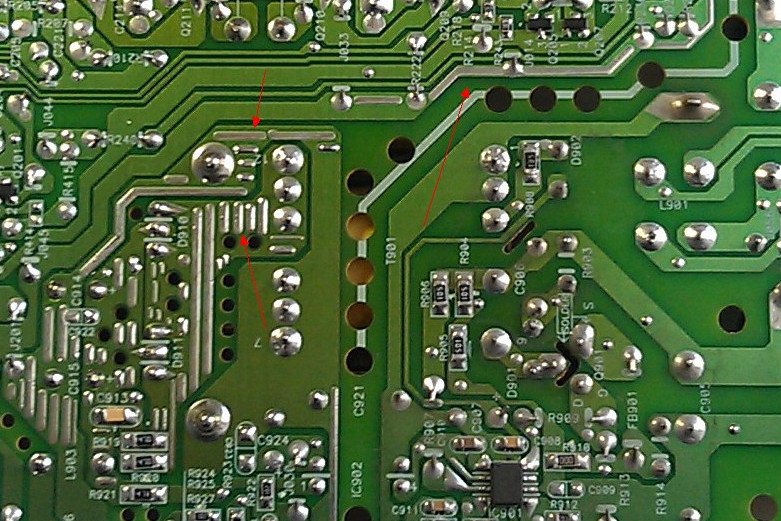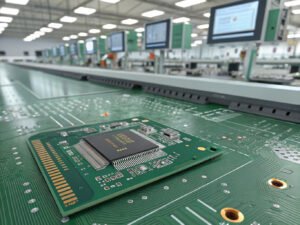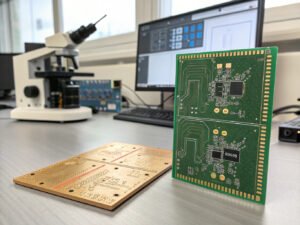When it comes to printed circuit boards (PCBs), the variety of products available can be overwhelming. From single-sided boards to complex multilayer and flexible options, each type of PCB serves unique purposes, determined by its number of layers and the materials used in its construction. This diversity allows manufacturers to tailor their solutions to meet specific product requirements, whether for consumer electronics, automotive applications, or industrial equipment.
Navigating the landscape of PCB options can feel daunting, especially with the multitude of choices at your disposal. However, understanding the fundamental concepts behind PCBs can simplify the decision-making process and empower you to select the right board for your project.
At the core of every PCB lies a foundational structure comprised of layers of laminated materials. These layers are meticulously engineered to ensure functionality, durability, and efficiency. The choice of materials, the configuration of layers, and the board's overall design directly impact its performance and suitability for various applications.
Whether you are a seasoned engineer or new to the world of electronics, this guide aims to demystify the essential aspects of PCBs, helping you make informed decisions that align with your specific needs. Let’s delve deeper into the characteristics of different types of PCBs and the factors to consider when selecting the ideal board for your projects.
Substrate Layer: The Foundation of PCBs

The substrate layer is essential for any printed circuit board (PCB), providing necessary rigidity and support. Most PCBs use fiberglass-reinforced epoxy, known as FR4, due to its strength, thermal stability, and excellent electrical insulation.
In contrast, flexible PCBs use materials like Kapton, allowing for bending and adaptability in tight spaces. While flexible substrates are versatile, they typically lack the rigidity of FR4.
Other materials, such as epoxy resins, can also be used, but they usually do not offer the same durability and performance as fiberglass. The choice of substrate significantly impacts a PCB's reliability and suitability for specific applications, making it a crucial consideration in the design process.
Copper Layer: The Heart of PCB Functionality

The copper layer is critical in any printed circuit board (PCB), serving as the primary conductive pathway for electrical signals. This thin copper foil is bonded to the substrate through heat and is integral to the board's functionality.
When discussing different types of PCBs, the number of copper layers is a key factor. In a single-sided PCB, a layer of conductive copper is applied to one side, while the other side is dedicated to mounting electronic components. In contrast, double-sided PCBs feature copper on both sides, allowing for a more compact design and denser wiring. This is facilitated by vias, which enable connections between the top and bottom layers, essential for many electronic applications.
The thickness of the copper layer is determined by the power requirements of the PCB. Boards designed to handle high power typically have thicker copper layers to ensure efficient current flow and thermal management, enhancing performance and reliability. Thus, the copper layer plays a vital role in the overall effectiveness of the PCB.
Solder Mask: Protection and Precision

After the copper layer is applied, the solder mask is added, giving the PCB its characteristic green hue. This layer serves a critical function by isolating the copper traces from potential contaminants and metal components that could damage them.
The solder mask not only protects the copper but also plays a vital role in the manufacturing process, particularly during component soldering. By covering areas of the PCB where no solder is needed, it guides users in placing components accurately. This ensures that solder is applied only to the designated pads, reducing the risk of shorts and enhancing the reliability of the assembly.
In addition to these benefits, the solder mask contributes to the overall durability of the PCB, providing resistance against moisture, dust, and other environmental factors. Its application is essential for maintaining the integrity and performance of the printed circuit board throughout its lifecycle.
Silk Screen Layer: Enhancing Usability and Functionality

The silk screen layer is a crucial component of a printed circuit board (PCB), primarily designed to improve human interaction with the board. This layer applies letters, numbers, symbols, and other markings directly onto the surface of the PCB, enabling users to easily identify various components, such as pins or LEDs, and understand their functions.
By providing clear labeling, the silk screen layer enhances usability, making assembly, troubleshooting, and maintenance more efficient. This visual guidance is especially important in complex circuits where multiple components are densely packed.
All the aforementioned layers are vital for the overall functionality of different types of PCBs. If you would like to learn more about PCB layers or request a quote, please feel free to use our quotation form or contact our friendly team at 01462 417400.
Looking for Custom PCB Solutions?
At CustomPCBA, we are dedicated to providing you with exceptional custom PCB solutions. Each layer of our circuit boards features carefully selected high-quality components that are essential for constructing the complex structures your products require. We understand that successful PCB design relies not only on the quality of the materials used but also on seamless customer service and support.
Our experienced team is focused on meeting the needs of clients from various industries, ensuring that every project is completed on time and to the highest standards. Whether you need single-sided, double-sided, or multi-layer PCBs, our experts will work closely with you to ensure the design meets your specific requirements while delivering optimal functionality and performance.
At CustomPCBA, we are always customer-centric, ready to provide professional advice and technical support. We understand every detail of PCB production and can offer you quick, no-obligation quotes. Contact us today, and let us help you bring your electronic product designs to life, layer by layer, creating outstanding solutions.



